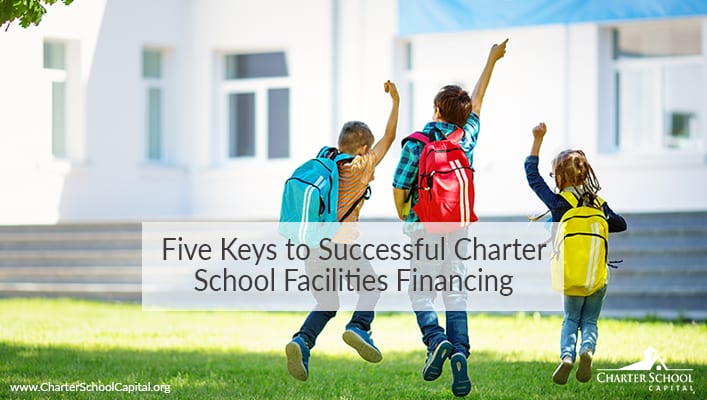If you feel that finding the perfect facility for your charter school seems like a huge, complicated undertaking, you’re in good company. Across the U.S., facilities are, by far, the greatest challenge faced by charter schools. Planning and financing any facility project is complex, time consuming, and has the potential to distract your team from its core mission: serving your students. Check out these five key considerations when considering charter school facility financing.
1. Before you do anything else, understand what you can afford.
Take the time to understand your revenue and expenses. Knowing what you can afford for rent will inform how much you can borrow for your new facility or facility expansion.
2. Plan at least a year ahead.
Any kind of facility expansion will involve quite a lot of effort and likely involve your entire team. The range of burden varies, but moving staff, students, furniture, and equipment is an enormous undertaking. If you’re renovating your current facility, you still need to plan ahead so your programs aren’t disrupted.
3. Look at market trends
The charter school market boils down to this: Plenty of kids want to attend charter schools, but there just aren’t enough seats, classrooms, and schools to serve all of them. Looking at market trends, money is cheaper than it was a decade ago or even five years ago, but interest rates have actually been rising over the last few years and are expected to continue to rise even more. The Federal Reserve Board is always analyzing the effect of interest rates on inflation and economic growth and has the ability to raise or lower them at any time. Changing interest rates affect every aspect of the capital markets.
4. Reconcile your dreams with your budget realities
Three key considerations here are:
- Requirements: Everyone wants a school that they can be proud of, but that isn’t as important as having a facility that enables you to meet your academic mission, fulfill the promises made in your charter, and meet your charter’s enrollment goals in the near term. So, go back to your mission and your board of advisors and dive deeply into what your facility must have to carry out your mission. Science lab for a STEM school? Auditorium or music room for a performing arts school?
- Curb Appeal: What are the minimum requirements needed to attract enough families to meet your enrollment goals? The way your facility looks isn’t as important as what it can do—but it’s still important. Depending on the area, the way a school looks can have a significant impact on student enrollment, and enrollment numbers drive operating revenue, which in turn affects the quality of your academic programs.
- Budget: Taking into account revenue and financing streams, what can you afford? Getting prequalified is the key first step in the process of renovating, expanding, or finding a new facility.
5. Understand the financing options available to your school
There are four main types of financing that charter schools use to finance facilities:
- Cash
- Investment Banks
- Bonds
- Long-term Leases
Your financing options may expand as your school matures. After a school secures its first charter renewal, more options become available, and the more conservative players in the capital markets begin to feel more confident about participating.
Depending on your school’s specific situation, one option may be the obvious best choice, or maybe you’ll need to weigh the pros and cons of a few different options. For each option, compare and contrast the amount of funds you’ll spend up front and annually to get the facility that you need. The time and opportunity costs associated with each option can vary widely, with bonds generally on the high end and long-term leases on the low end. Some transactions can take six to 12 months; a long-term lease typically takes between 60 and 90 days.
Charter school facility financing is complex, that’s why it’s so important to find the right funding partner to help guide you through the process and help you succeed. Charter School Capital has years of experience in navigating the unique needs and challenges of charter schools and has helped schools achieve their facility goals using each of those methods—and our team of dedicated charter school experts will help you see which solutions might be best for your school’s situation. Connect with one of our charter school advisors to learn how we can help you achieve your goals.
If you’re still feeling overwhelmed, don’t worry, we’ve developed a manual to cover our perspectives on the charter school facilities landscape market and provide you with practical and actionable advice on planning and realistically balancing your team’s facility dreams with budget realities. We also cover in-depth the four primary funding structures that charter schools use to finance facilities mentioned above: cash, banks, bonds, and long-term leases.
Download this guide to get a deeper dive into the five keys to charter school facilities financing we’ve mentioned in this blog post.

The Ultimate Guide to Charter School Facility Financing:
Thinking about a new facility for your charter school or enhancing your current one? This guide shares straightforward and actionable advice on facilities planning, financing options, getting approved, choosing a partner, and much more! Download it here.
